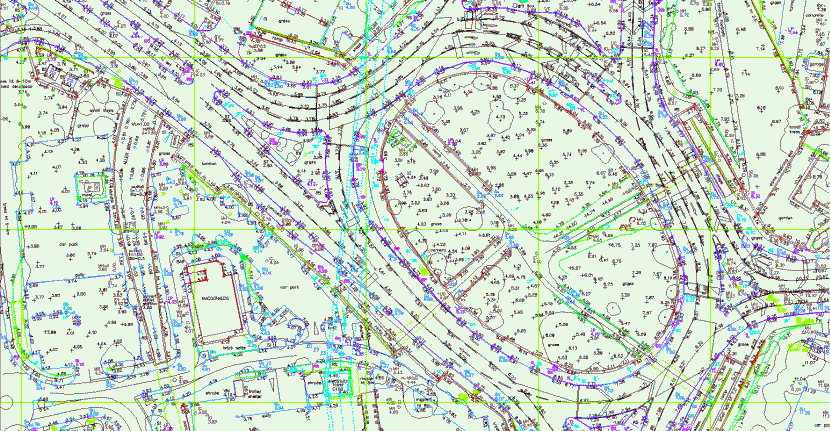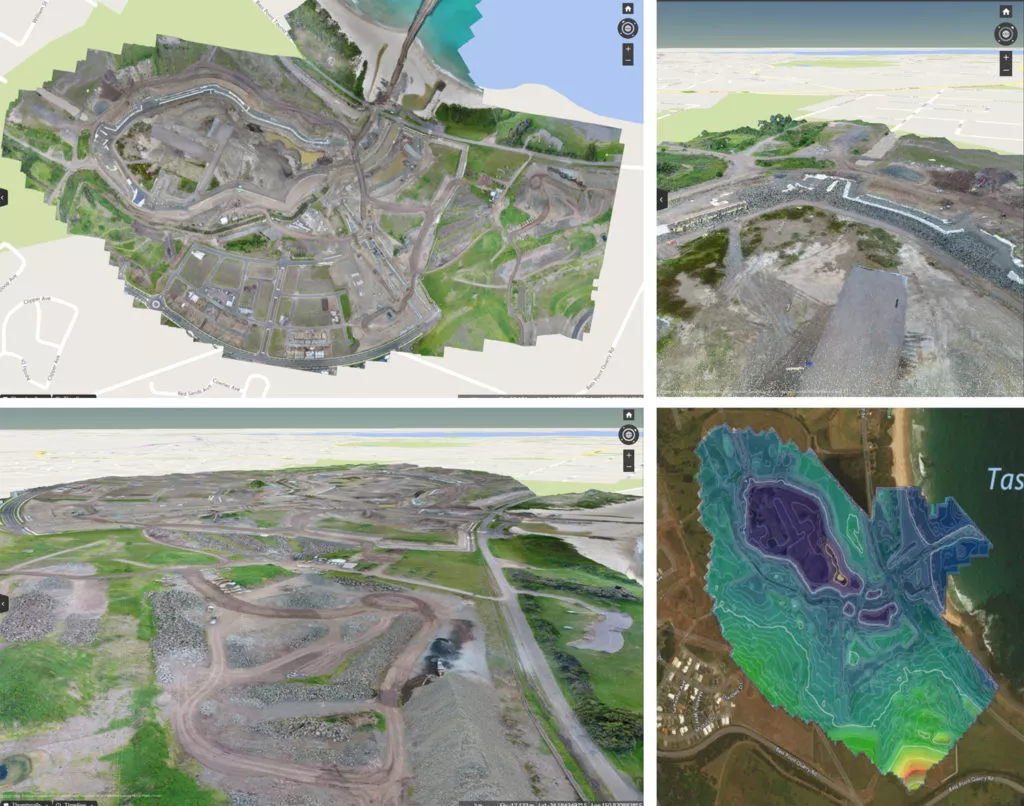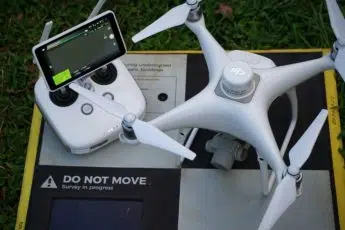Increasing Project Efficiency with Topographic Drone Surveying
Drone surveying technology has become a common tool in any surveyor or site manager’s toolkit, and has advanced topographic surveying by enabling the capture of detailed site maps, including contours and terrain, for a fraction of the time and cost of traditional methods.
How is drone topographic surveying used?
Drones can be flown to collect topographic surveys over large worksites where traditional survey methods with a base and rover would be very time-consuming and possibly hazardous for the surveyor. They can be equipped with a range of specialized sensors, cameras, and other data capture devices in order to deliver the best topographic survey possible. Aerial photographs are captured by the drone with ground control points marked on the site prior to the survey flight. Using the principles of photogrammetry, a digital terrain model is created through a processing platform like Propeller from the photos that measures the topography of the ground.
Drones can also be useful for infrastructure surveys, where inaccessible building roofs can be viewed and measured, and for quarries and mines where safety considerations may prevent full access.
What benefits does drone topographic surveying offer?
Being able to capture precise and accurate visual representations of a worksite quickly and efficiently is a major benefit of using drones for surveying. The technology also offers other benefits to civil construction and earthworks site managers, including:
Reduced surveying time: Using an commercial grade drone, topographic surveyors can obtain an aerial perspective of the land they are surveying. Drones equipped with high resolution cameras can be used to capture detailed images in a short amount of time, significantly reducing the time needed to obtain highly accurate 3D topographic survey maps.
Link with ground control points: Carefully-placed ground control points are critical for ensuring drone topographic survey accuracy. Using drone surveying technology like the Propeller Platform, surveyors or site managers are able to link the drone data capture with point clouds and accurate coordinates on the orthophoto.
Increased worker safety: By capturing the data for a topographic survey with a drone, surveyors don’t have to manually collect data on dangerous terrain, such as climbing stockpiles or avoiding heavy machinery on a mining haul road. Topographical drone surveying makes the overall process more streamlined and keeps teams in the field much safer and more productive.
How to topo survey with a drone
Before you fly, you’ll want to familiarize yourself with how to conduct a drone topo survey.
Run through your checklist before heading out to the site: First, verify you are allowed to fly your drone at the selected job site. Also, ensure the weather will be satisfactory for flying a drone, e.g., no rain or high winds. Next, be sure your drone battery is fully charged and that you have sufficient space on the memory card of your drone to capture aerial photos.
Plan your mission: Create you survey flight plan with the app from your drone’s controller. Make sure you account for all features on the job site within the area you plan to fly, including hills, stockpiles and other tall objects. The altitude, ground sampling distance (GSD), flight direction and image overlap are all adjustable pre-flight.
Set up your drone and ground control: Unpack and prepare your drone for flying and ensure that conditions are safe. Check each parameter, such making sure the camera lid is removed and cleaning the distance sensor. Next place your ground control points, such as Propeller’s AeroPoints, around your site. In many cases, you may only need one AeroPoint to cover your site.
Fly and collect your aerial photos: Once your drone takes off, it will begin capturing images of your site. At the completion of the mission, it will land back where it started. As the pilot, you should ensure that nobody approaches the drone during take-off or landing and that good weather conditions exist for the duration of the survey mission.
Drone surveying is within everyone’s reach
Getting certified to fly a drone for commercial use is easy, and the increasing affordability of drones means completing a site survey in a couple hours or less hour is common.
Accurate data obtained by surveying with a drone is being used in many land development projects from the early stages of planning and designing subdivisions to preconstruction assessments. The data also helps site managers better track their project progress, and when used with ground control systems like AeroPoints and processing software like Propeller, provides a quicker, easier, and safer way to produce digital terrain models and aerial site maps than previous methods.
Calculating the return on investment
Using conventional GPS and a total station surveying instrument can take a lot of time to survey even a small site. And that’s not including the office time it takes to process data into final linework and surfaces.
When you add this to conventional surveying costs (around $125/hour), traditional surveying methods can be cost prohibitive when trying to cover large sites on a regular basis.
Using drones with a platform like Propeller empowers site personnel to develop accurate estimates, track progress, and make data-driven decisions. This workflow can save a major civil construction project literally millions of dollars.
Better insights from detailed, visual datasets
Unlike traditional topographic survey data—which is basically a set of linework—drone surveys include an orthophoto, contour map, digital terrain model, and dense point cloud. The result is a highly accurate, visual dataset. All ready for analysis.


A shared view means everyone is on the same page
With measurable 3D site surveys available on a cloud-based software platform, virtually anyone on a jobsite can access and use drone topography data on demand.
Shared securely across the project team, Propeller datasets can be used to document how a site looks before earthwork starts, and track every step of progress along the way.
Simple tools give everyone the power to map, measure, and analyze
With easy-to-use tools to measure and annotate datasets, stockpile volumes can be accurately measured quickly and haul road grades can be measured in mere minutes.
Using a surface-to-surface comparison, site terrain can be viewed against design to see where material should to be added or removed. Timeline sliders make it easy to visually track changes in specific areas, or across the entire site, to make sure everything’s on track for successful completion.

Laying boundary linework over an orthophoto also allows site managers to check that the construction operations remain within the defined area to avoid rework or possible legal issues.







